Enjoy your walking even more by having the best bits of walking kit
The main reason I set up this blog is to try and inspire others to get out into the great outdoors and feel the benefits of walking for themselves: the stunning scenery, the exercise, the fresh air, the socialising and just getting away from it all.
Many visitors to my blog are just beginning to get into walking and I have created this blog post to give you some tips on what to take on a hike.
Planning
First up - before deciding what to take on a walk you need to plan your walk, which means choosing your route and when you are going to do it. Hopefully this site has given you some ideas for walking routes and there are lots of great resources on the internet to inspire a good route.
Phone Apps with maps and walking routes:
One of the best tools I use to plan a walk is a good phone Map App with GPS. The great thing about these is that you can also download maps to your phone - so it will still work even when you have no phone/internet signal as it will use your phone's GPS to tell you exactly where you are on the map (GPS doesn't need a phone signal/internet to work) . I’m currently using Ordnance Survey OS Maps on my phone and it's the best one I've used so far. It's also great for planning walks and even viewing routes in 3D before your trip to see just what lies ahead! For a few quid a month it's a great investment for any walker - click the link below to find out more.
I should add here that you should not just rely on a phone app when out walking - because your phone battery could die or you lose or damage your phone so also take paper maps with you and be able to use a compass!
Check the weather forecast!
Once you know where you will walk, roughly how long it will take and what day/time it will be - check the weather forecast! This will inform what clothing to wear and take in your rucksack on your walk! Other than the obvious weather websites - you should check more detailed forecast for the regions you are visiting, especially if you are hiking up mountains as the weather on summits or in isolated valleys is quite different to the weather elsewhere and can change in an instant even if you think it looks pleasant when you set off on a walk. In the UK I like to use www.mwis.org.uk to get a good understanding of the weather in the area I will walk.
 |
| Sometimes taking the right gear on your walk can make or break it! |
Essential kit to take on your walk
Below are some recommend essential items to take on your walk and where possible I have linked to some recommend online products. I'm not sponsored by any brand so my advice is impartial and if you have the option of buying your gear from local independent walking retailers then please support them.
Walking footwear
I have 2 types of footwear - walking boots and walking shoes. If I’m hiking in rough or wet terrain or steep paths I’ll wear my walking boots for ankle support and added protection. If I’m walking on easier going, drier paths I’ll wear my walking shoes. Its good to have both types of footwear in your kit and I've recommended some products below:
Walking boots - I prefer leather ones that are fully waterproof, comfortable and easily cleaned and I'm using the Berghaus Men's Supalite II Gore-Tex Waterproof Hiking Boots - I don't mind spending money on a good pair of walking boots as they are a good investment and make my walking much more comfortable, and will last ages if well looked after.
Walking shoes - it's good to have some footwear that is lighter to wear in favourable conditions and I'm currently using Merrell Men's Intercept Low Rise Hiking Shoes
Socks - be sure not too overlook these - a good walk socks will keep your feet comfortable, dry and the blisters away! Avoid thin cotton ones, go for breathable types - Merino Wool socks are ideal!
 |
| A good waterproof jacket is a key part of my kit and it's always in my rucksack as you never know in the UK when that rain will come or if you need to put an extra layer on on the summits. |
Walking clothing
What to wear and take with you in your bag all depends on where you are walking and the weather forecast. There are all sorts of walking clothing available now to suit any budget. I'm someone who is budget conscious so like to save money where possible, but where I would recommend to definitely spend your money is on a good set of waterproofs (coat & over trousers) as well as your footwear. Here are some tips & recommended products:
Walking basics:
- Walking t-shirts & base-layers - Just go for technical materials that dry & breathe easily and avoid cotton ones that will make you damp
- Walking shorts - if like me you prefer wearing shorts when the weather is favourable - get some with plenty of useful deep pockets and that have a water repellant fabric
- Walking trousers - again go for those made of technical fabrics that will dry quick and allow for good range of movement. The Montane Terra Trousers are a favourite of many walkers and are regarded as the best in class.
Waterproofs - a must have!
- Waterproof Jacket - this is a must, especially in the UK! I always take with me my fully waterproof Berghaus Men's Maitland Gore-TEX Hiking Jacket - its good value for such a technical jacket and being made of Gore-TEX means it is completely waterproof - it's saved me many times and I definitely don't regret spending the money when I've been walking with others who have tried to save a few quid by going for cheaper options and haven't been as dry as me :-) If looked after it will be a good investment. It comes in both men's and women sizes.
- Waterproof Over trousers - I also keep in my rucksack at all times my waterproof over-trousers and the Berghaus Paclite GORE-tex trousers that I use are fully waterproof to keep you completely dry and pack away in a handy little stuff sack no bigger than a can of pop!
Keeping warm:
- Warm Coat / Down Jacket - for colder conditions I like to take a lightweight Down jacket, which gives you excellent warm to weight ratio, such as the Rab Microlight Alpine
- Insulating mid-layers - again depending on the temperatures- you may want to wear, or pack in your rucksack, extra layers such as fleeces or soft shell jackets.
- Remember its always better to take too many clothes than too few. If you reach the summit of a mountain after getting a sweat on and then sit down and get cold with no layers to put on - it can really spoil an otherwise great moment!
 |
| Whether your only carrying your own stuff, or for others too, a good rucksack is another great investment |
Rucksack / Daypack
Make sure it’s the right size for your needs - what do you need to take? This is usually determined by walk distance (how much food & water do you need to take with you to cover you [and others?] for the amount of time you will be out), what is the weather forecast (is it likely to get wet or colder [if you are hiking summits] and are you going to need to take waterproofs or extra layers?
I like to walk as light as possible (and I find a bigger bag means you just pack more stuff that is perhaps not necessary) - so in the months when it's likely to be mild and dry, on day trips I’ll just use something fairly small of the 30L capacity. I'm not too concerned with paying lots of money for a daypack and like value for money - so something like the Trespass Albus Backpack suits my needs. I prefer something with compartments for different items (and to separate out food from kit) and also prefer the side pockets to but my water bottles in for easy access.
You will also want to choose your rucksack to accommodate the things you will need to take, such as:
Food
I like to take easily-made standard sort of stuff like sandwiches/wraps (in a reusable plastic container to stop them getting squashed) cereal bars & flap jacks with high energy content; fruit such as bananas or dried fruit for another energy boost; crisps. Basically take anything which you a) enjoy and so will make your walk more enjoyable! b) won’t perish easily c) has high energy content d) is fairly easy to eat with not much mess and rubbish to carry home with you!
Drink
Take plenty of water as you don’t want to get dehydrated - a general rule of thumb in moderate conditions is half a litre per hour!
Flask - it's a nice little treat to drink something hot or cool on your walk when far away from any shop or cafe. I’ll usually take flask containing coffee for a little caffeine boost. If it's really cold I may take 2 flasks and put soup in one - or if really hot I’ll take some chilled drink with ice-cubes in. Whatever you take it’s a nice treat on the hike and I used to look on in envy at those who where drinking something hot on top of a cold mountain summit! Something like the 1 Litre Thermos Light and Compact Flask will do just the trick and keep drinks at a certain temperature for up to 24 hours!
Other stuff to take in your rucksack:
Maps & compass - As I've said - Phone Apps are a good tool but they can fail you! So take paper maps and a compass and no how to use them. This is what an OS map looks like (click here) and you can pick them up for about £8!
Clothing - You will want to include in your rucksack extra items to cover you incase the weather gets colder (the higher you get) or wetter. I always pack in my rucksack my waterproofs. Its also worth taking an extra mid layer such as a fleece top in your rucksack for when you stop for a rest.
Headwear - It's a good idea to pack a hat - to either keep the sun off you in this long days out in the sun (cap) or keep your head warm (beanie). Speaking of sun - if it is sunny - take a little suncream too and maybe some sunglasses.
Gloves - If it’s in the colder months some nice gloves will come in handy
Sit mat - These don't cost much - but come in very handy when the floor can be a little damp or rough - and for only a few quid is one of the most useful things in my rucksack - it's made many a sit down more comfortable, prevented a some wet trousers and others always say "that's a good idea" It also folds down very small to pack away. The photo below of the sit mat is the sort of thing I mean (Click here to find out more)
Mobile Phone - You will want to take your phone, and may even be using a GPS Map on it for your route. Make sure it is fully charged and it might be an idea to take a phone battery pack too just in case you run out of charge - such as this Anker Power Bank which you can pick up for about £14 - very handy!
Camera - You will want to take some photos on your walk, and unless you are just using your phone, you might like to take something a little bit better to capture those moments. I'm currently using the Canon Powershot G7 X Mark II Digital Camera Camera, a high-end compact camera that is easy to whip out the pocket, and it's also got a relatively wide-angle lens compared to usual compacts so it allows you to fit more of the scene in your image - most landscape photographers use a wide angle lens and this is why their photos look so good!
Watch - You will have the time on your phone - but it’s good to keep track of time another way (sunset times etc) - and you might even prefer to use a step counter to see how far you've actually walked
Torch - I always have one in my Rucksack - you never know, your walk could take longer than you think or worst case scenario you may get injured on a walk and end up in the dark! I use the little beauty - the Night Commander Flashlight Pro280, iProtec
First Aid kit & Emergency whistle - Again, you never know what can happen - and plan for the worst! Fortunately I've never had to use mine (so far)!
Hope all the helps! Happy Hiking :-)

Post by Stuart Hodgson 'The Hiking Photographer'

Subscribe to my monthly email newsletter to stay up to date with all my outdoor adventures, including my latest photos & walking blog posts, as well as a whole host of tips & interesting stuff for outdoor enthusiasts, just click the link below to subscribe.
FOLLOW ME
Not all my adventures & photos end up on this blog -
Give me a follow to see what else I've been up to!
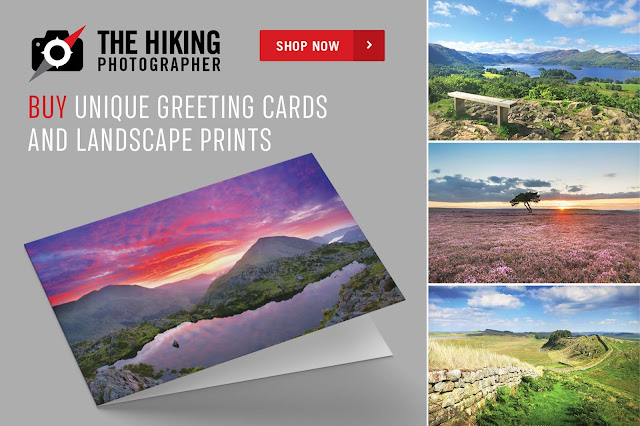 |
| Help support this blog and buy some unique greeting cards or landscape prints by Stuart Hodgson (The Hiking Photographer) - visit www.hikingphotographer.bigcartel.com |
 |
| A useful blog post on recommended essential walking gear |


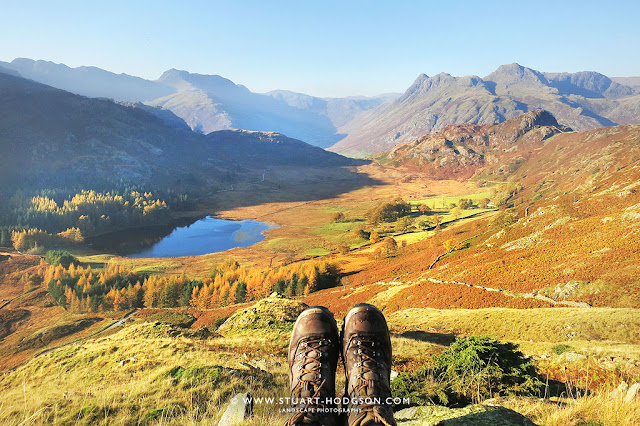
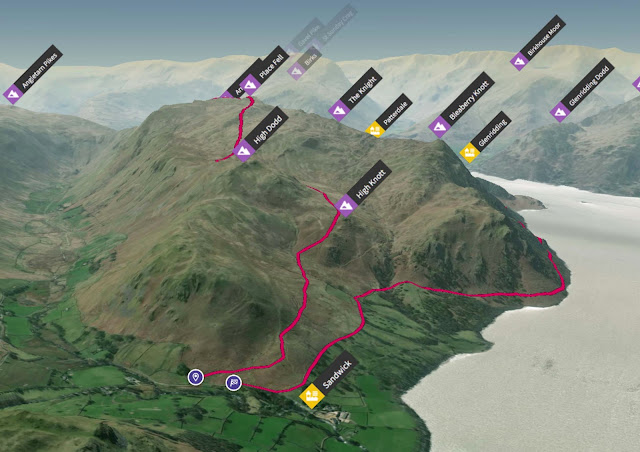
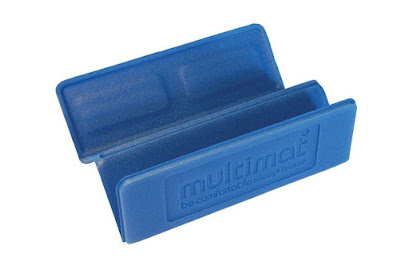




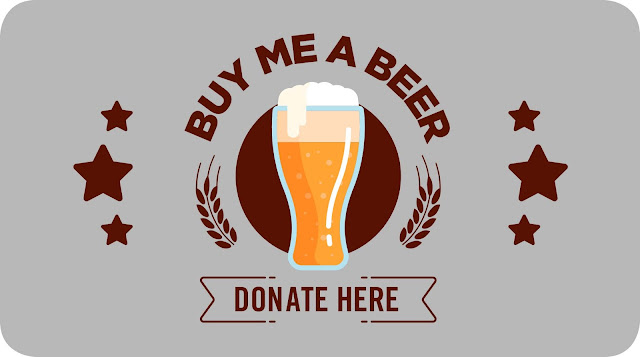
No comments
Post a Comment
Thanks for taking an interest in my blog, all comments and questions are welcome! Best, Stuart